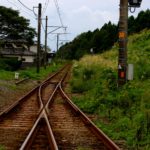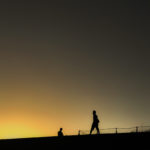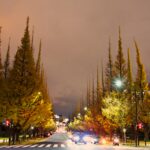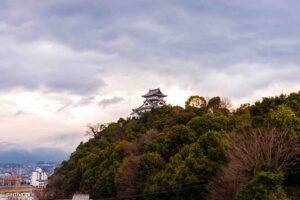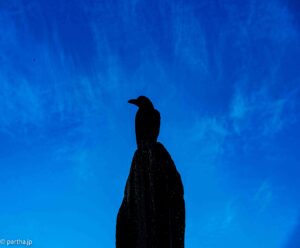
At first there was hope, floundering and sinking, then there was fear, niggling and tingling, the enemy was invisible, unknown and there were no patterns in its behaviour. Then then there was panic, wild and raw!
The wild panic of the early days turned into a fatigued resignation of the middle months, the occasional bursts of optimism brutally crushed, the disease didn’t show any mercy. We gave up our fear because eventually we lost our sensitivity to fear and were too numb to react any more.
There was a dream, however impossible it seemed at that time, of a world that was free of the the disease, not all diseases but at least the one that seemed to have weighed us down unlike any other.
The social media was full of memes on what would happen when it would all end. These were the creations of innocent hope or or the figments of distraction from the ruthless reality that was being unleashed all around.
We still believed that the end was near, the plagues of the past were unthinkable in this modern age. What we refused to accept was that with the developments of the modern age came continuous contact. We were all connected, not just virtually but physically too.
Faster and more affordable transportation meant that people traveled more frequently and further than ever before. The exotic lands that we read about in our childhood were not so exotic anymore.
You could leave home in the morning, fly to a different country a few thousands kilometres away and get to a meeting in the afternoon. The speed of travel reflected proportionately on the spread of infections, a single infection could turn into hundreds and thousands in a few days.
Isolationism suddenly seemed attractive, yet an impossible option. A world addicted to an incessant flow of goods, produced cheaply, distributed efficiently and made attractive and necessary by an indestructible information highway, meant that even the most reclusive of us would have multiple touch points and thereby multiple paths for the spread of the virus.
The ebb of infection and the tepid change to the flow of dissipation, the sudden joys of the interlude and the despair at the return of the disease, battle hardened and stronger than before, repeated over and over again.
People sought comfort in religion but there was no solace there, beliefs could not vanquish an unsparing enemy. There were others who turned believers in desperation, reviving old myths. In Japan people turned to a centuries old myth of a mermaid that emerged from the sea and predicted a plague.
This mythical creature, witnessed by a lone government official in the 17th century, instructed him to draw an image of the creature and share it with other people. Doing so would ward off the plague.
The story seems suspiciously similar to a chain letter hoax, promising riches on those who distributed a letter to others and promising retribution on those who didn’t.
‘What remained common to all the prophecies was that, in the last resort, they were reassuring. The Plague however was not’
Albert Camus The Plague
Chain letters did not bring riches and obviously didn’t cure diseases either. It might have cured and unfettered irrationality though.
Those who did not believe finally had a reason for their lack of faith. The victory of reason, albeit a pyrrhic one seemed to justify the pointlessness of existence. The lack of beliefs or the evident meaninglessness of existence seemed rational.
Some of us turned to reading about a fictional outbreak of a plague by the existentialist philosopher Albert Camus of the earlier century and his account of a plague in a small town in Algeria seemed oddly comforting.
The antidote to suffering is reading about an account, albeit fictional, of others suffering the same way we were suffering now. The progress of a century since the book was written or a century and a half when the original plague was said to have occurred, seemed to have little impact on how we reacted to a newer plague.
The spread of disinformation was slower in the days when people had fewer platforms to spread paranoia. The divisions of an earlier era that were attributed to a lack of information were amplified in the era of an overflow of information.
‘Because of the efficient impartiality which it bought to it’s administration, the plague should have worked for greater equality among our fellow citizens through the normal interplay of egotism, but in fact it heightened the feeling of injustice in men’.
Albert Camus- The Plague
The poor became poorer, the weak suffered disproportionately because of their lack of advantages. The divisions between the ‘us’ and ‘them’ became wider.
Suffering was for the unfortunate, they were vilified for their race, ethnicity and even for their lack of wealth. In times of distress we need someone to blame and the ones who could not defend themselves were blamed disproportionately.
The disease petered out eventually, exhaustion taking credit. The masses tired of fear and the disease ran out of masses to infect. The ones who had it were safe for a period and there were many who had it but did not know, joining the ranks of the immune.
There was no dramatic opening of the gates as in the ‘The Plague’, the gates were aways partially open at least in most major countries. There were brief openings and closures but generally the openings were gradual.
I traveled out of these partially opened gates one November morning, crossing deserted airports, half capacity planes, unclear quarantine rules and came out more appreciative of everyday freedom than ever.
The global travel highway seemed constrained and constricted. There were protocols to follow, vaccinations to be taken, tests to be done before one could board a flight. Arriving in another country was as nightmarish as getting there, noses were jabbed, throats swabbed, sputum collected , temperature taken before you were let in. Even when you finally managed to arrive, there were yet more rules to be followed to allow you to stay.
Quarantine rules were relaxed gradually, testing requirements growing less strict, the symbolic gate openings were when the requirements were removed all-together. My ‘gate opening’ moment was at the Mumbai Airport when I tried to fill an online registration form required to enter Japan and a message flashed that the form was no longer required, the requirements waived 2 weeks earlier than expected.
But the disease persisted, our alarm at its existence was all that was gone. Governments did not report the daily infection counts, but the infections were and are still there. There is a false sense of immunity that has spread. Borrowing a phrase from another era we are in a state of ‘irrational exuberance’ . There is a joy that cannot be explained or as Camus said ‘joy is a searching emotion that cannot be savoured’.
Many people wanted to feel that some good would come out of this horror, that we would as a species learn virtuous lessons and emerge from the cocoon of the lockdown as splendid New Age butterflies and create kinder, gentler, less greedy, more ecologically wise, less racist, less capitalist, more inclusive societies’.
Salman Rushdie- Languages of Truth
The world on the other side seems no better than the world we escaped from. People were no better than they were before, if anything, they were more paranoid, more suspicious, less tolerant and if one could use the word, more regressive.
2023 was when we finally learned to forget the virus, we did not make it disappear, we managed to stop obsessing over it. The inconveniences in travel gradually ceased, we did not have to worry about filling up forms, or rather forgetting to fill up forms when landing at a foreign airport.
The senseless war in Europe that started in 2022 continues extracting a heavy toll on both sides. In some ways it resembles the Spanish Civil war, where idealists from across the world join in to fight fascism and despite the ideals and valour, fascism still seems to be winning.
Autumn is a time of peace when nature cloaks itself in deep colours and makes us forget the harsh summer, the summer of 2023 was harsher than ever. As I drove to Fukushima on an early October Saturday morning, my phone buzzed with breaking news alerts. The highway was crowded with a bumper to bumper traffic, a crash on the highway closing down lanes, and I ignored the alerts navigating through a different crisis.
The scale of the violence was still unclear when I reached a small town in the Fukushima prefecture after an 8 hours drive. Cellphone reception was patchy, the wifi at the place I was staying weak and the news coverage on television not extensive enough.
The horrors of that day, the brutal massacre that ensued became clear once I returned to Tokyo a few days later. The scale of retribution that ensued might have surprised some but was entirely predictable.
As we step into 2024 the violence continues and new fronts have opened up threatening peace across the region. The old social lives have returned, people flood bars and restaurants, games are played in front of packed crowds, the romance between a pop icon and a player driving them in larger numbers.
Elections in two of the largest democracies revive in us something that was never dormant, hate. The exile of the pandemic has allowed our wounds to fester and turn septic.
The past is not behind us, it stays with us as a constant, we forget nothing, we remember everything, but with a renewed hate!

